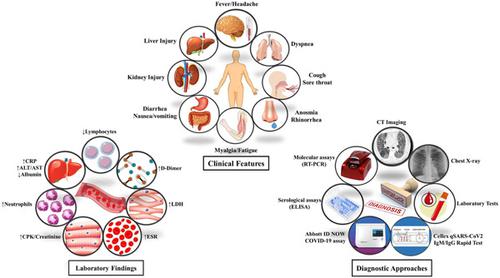当前位置:
X-MOL 学术
›
J. Cell. Physiol.
›
论文详情
Our official English website, www.x-mol.net, welcomes your
feedback! (Note: you will need to create a separate account there.)
The outlook for diagnostic purposes of the 2019-novel coronavirus disease.
Journal of Cellular Physiology ( IF 4.5 ) Pub Date : 2020-05-26 , DOI: 10.1002/jcp.29804 Safa Tahmasebi 1 , Elnaz Khosh 2 , Abdolreza Esmaeilzadeh 3, 4
Journal of Cellular Physiology ( IF 4.5 ) Pub Date : 2020-05-26 , DOI: 10.1002/jcp.29804 Safa Tahmasebi 1 , Elnaz Khosh 2 , Abdolreza Esmaeilzadeh 3, 4
Affiliation

|
At the end of December 2019, a novel acute respiratory syndrome coronavirus 2 (SARS‐CoV2) appeared as the third unheard of outbreak of human coronavirus infection in the 21st century. First, in Wuhan, China, the novel SARS‐CoV2 was named by the World Health Organization (WHO), as 2019‐nCOV (COVID‐19), and spread extremely all over the world. SARS‐CoV2 is transmitted to individuals by human‐to‐human transmission leading to severe viral pneumonia and respiratory system injury. SARS‐CoV2 elicits infections from the common cold to severe conditions accompanied by lung injury, acute respiratory distress syndrome, and other organ destruction. There is a possibility of virus transmission from asymptomatic cases as active carriers, in addition to symptomatic ones, which is a crucial crisis of COVID‐19 that should be considered. Hence, paying more attention to the accurate and immediate diagnosis of suspected and infected cases can be a great help in preventing the rapid spread of the virus, improving the disease prognosis, and controlling the pandemic. In this review, we provide a comprehensive and up‐to‐date overview of the different types of Clinical and Para‐clinical diagnostic methods and their practical features, which can help understand better the applications and capacities of various diagnostic approaches for COVID‐19 infected cases.
更新日期:2020-05-26











































 京公网安备 11010802027423号
京公网安备 11010802027423号